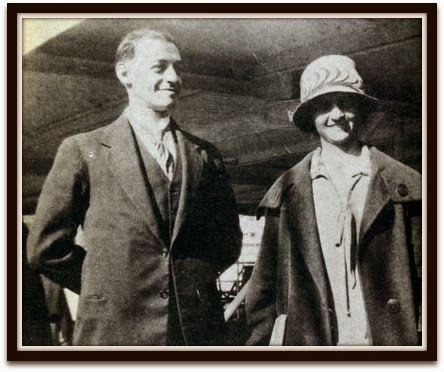What Did A.W. Pink Believe About Head Covering?

[Series introduction: This post is part of a series that will examine what certain leaders in church history believed about head covering. Their arguments, choice of language and conclusions should not be misconstrued as an endorsement from us. The purpose of this series is to faithfully show what they believe about covering rather than only selectively quoting the parts we agree with.]

In May 1926, Arthur Pink addressed the congregation of Particular Baptist Church in Sydney, Australia. His topic was “Headship” and the sermon text was 1 Corinthians 11:2-16. Through this sermon we come to understand what Pink believed about the symbol of head covering.
He believed that the symbol should be practiced today and distanced himself from the cultural view. He said that “there are some who claim that much in this first epistle to the Corinthians only had to do with local conditions that then existed and does not apply to the churches of God today. I emphatically deny it.” He also didn’t see this as an insignificant matter. He knew that “there is nothing small or trivial in the things of God” and that “big doors swing on little hinges.” That’s why he exhorted his congregation on this passage. Through his words we see that head covering in Australia was losing popularity even in the 1920’s. He said that wearing one may “cause the world to sneer” and “bring upon you the taunt of ‘old-fashioned'”. He also mentioned that there was “fashion which is increasingly popular among women today” of cutting their hair short, which he was strictly against. This was the era of the first wave of feminism and we see that it was already having a negative impact on biblical gender roles and distinctions.
For Pink, head covering was directly connected to headship. He said, “Since God has established this order [of headship] both men and women are commanded to act in accordance therewith” and “because the woman has not been given rule and headship her head must be covered.” This was not something negative but rather a tremendous privilege. He told the sisters that, “there is granted unto you a way and a method of imitating and following Him that is denied even to the brethren.” You can hear through his words that it’s not that women have to cover their heads, it’s that they get to. It’s an honor that brings upon “the approval of God and brings you into the place of following and imitating Christ.”
Men were not ignored in his exhortation. He informed them that they were forbidden to cover their heads in church. He said, “suppose that a major or a general should appear at the head of his soldiers in the uniform or the garb of a common soldier, instead of in his official accouterments; he would both dishonor his king and he would disgrace himself. So any man who enters the church praying or prophesying with his head covered dishonors his spiritual head–Christ–and disgraces himself”. Since men have the responsibility of headship, he exhorted them to not abuse that power. He calls on men to not “misuse his authority by being a tyrant” but to imitate Christ whose yoke is light. He told them to “see to it that the yoke and the burden you place on your wife is equally easy.”
Moving back to the symbol itself, Pink did not think that the covering had to be any particular style. He said that they could “wear a head-covering, a hat or a veil.” We have a picture of his wife, Vera, wearing a hat so that may have been their own personal preferred style. As to where it was to be practiced, he saw no limitation. Though he said that this passage is about “church order and church government” and that when she “enters the house of God, another covering is required,” he said elsewhere that nothing “limits the injunction to any particular time or place. What is said applies to women whether engaged in prayer, in some public meeting, at family worship, or in the privacy of her own room.” 1) A.W. Pink’s Studies in the Scriptures – 1930-31, Volume 5 of 17 (Sovereign Grace Publishers, 2001) page 191
As we close I’ll leave you with quotations from Pink which summarize his views:
“Now God has appointed that because man is the head, because headship or dominion or rule has been delegated by God into the hands of man, God has ordained that that shall be symbolically shown forth when he enters the house of God. His head shall be uncovered; his head shall be revealed; his head shall be manifest because God has given to him the headship. But because God has not given headship to the woman, because he has placed her in subjection to man, therefore that must be symbolically shown forth by her having head covered, her head concealed, showing that she is not her own head, and her own ruler.”
“because the woman has not been given rule and headship her head must be covered, and covered with a double cover: first, the long hair that God has given her by nature, so that even when she is outside the church that covering shall indicate that she is not her own head, but that she is under the dominion of the head of her household: secondly, that when she comes into the house of God there must be the additional covering of the hat because she is also in subjection to her spiritual brethren to whom God has appointed rule.”
References
- Is Head Covering Related to Spiritual Gifts? A Response to Barry York - July 5, 2023
- A Husband’s Authority is Limited (He is Not Pastor or King) - November 14, 2022
- Statement from Jeremy Gardiner: Leadership Transition - September 26, 2022



